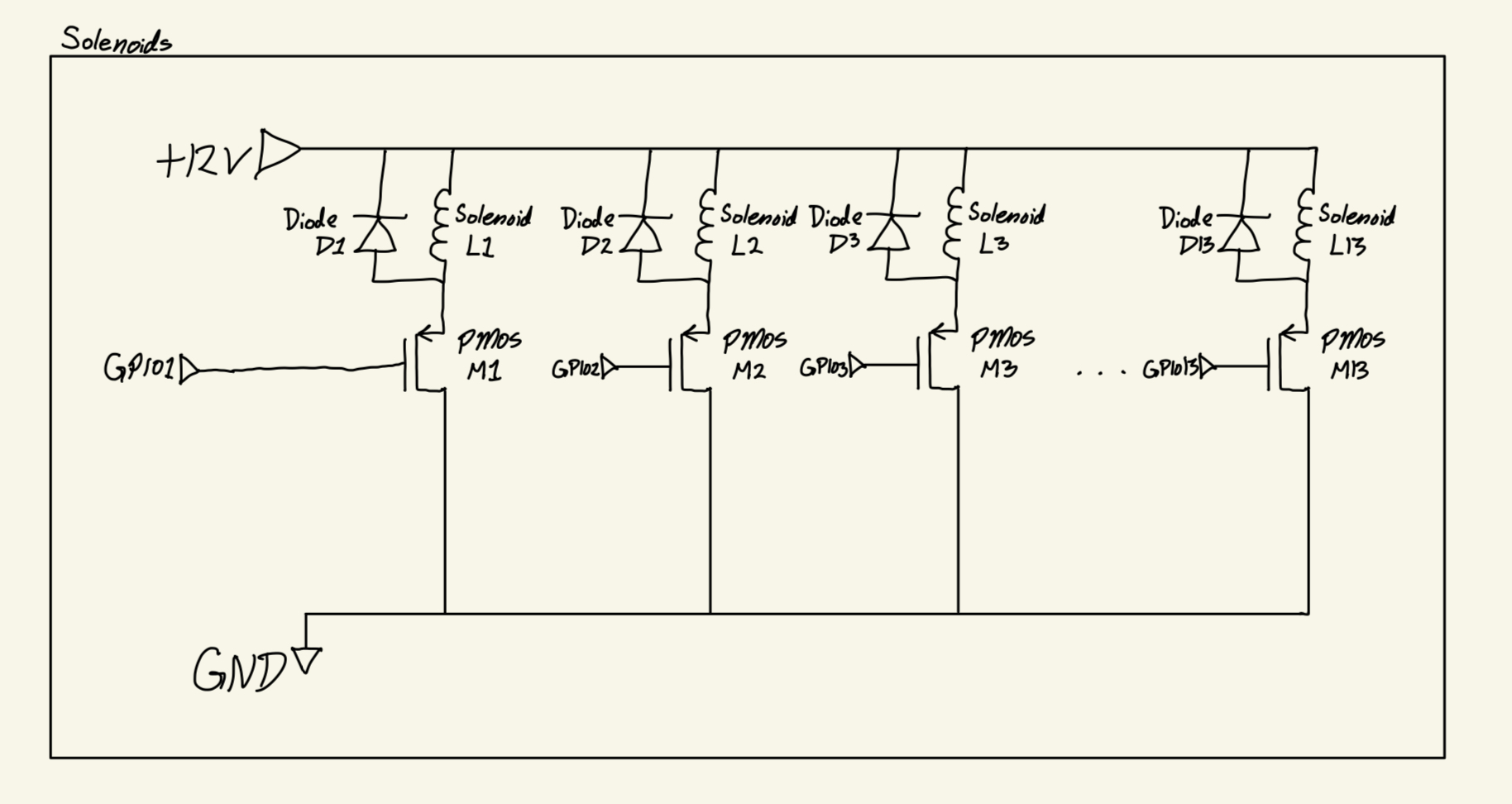This Week
The majority of this week was spent researching solenoids and finding an affordable solenoid to fit our design requirements. I determined that we needed a push solenoid with a stroke length over 4mm (the travel depth of a membrane keyboard’s keys), to ensure notes can be fully depressed on a keyboard, and a duty cycle close to 100%, without being too expensive (preferably under $15), since we would need 13 solenoids for the final product. The solenoid with part number 412 from Adafruit Industries is documented to fulfill all of these requirements, with a 100% duty cycle and cost $7.50 each (without factoring in tax or shipping). A purchase order for 2 Adafruit 412 solenoids was placed on Wednesday so that we may test the solenoids to ensure they meet our requirements.
Additionally, I created a more detailed block diagram for the hardware aspects of the product, see Figure 1, and created a schematic to implement the 13 solenoids based on the Adafruit 412 documentation [1], and my report from last week where it was discussed that a PMOS’s gate may be used as an enable line, see Figure 2.
 Figure 1: Hardware Block Diagram
Figure 1: Hardware Block Diagram Figure 2: Solenoids Schematic
Figure 2: Solenoids SchematicWhile I am on track currently, the delivery date of the solenoids may cause some delay in the testing and further development of our design. If this occurs, I can begin work on the 3D model for the solenoid’s case early. Additionally, Shravya and I could go over our designs together and model how they may interact to be better prepared for when the solenoids arrive.
Next Week
In the coming week, I plan to test the solenoids with Shravya, and test our circuit designs. Additionally, I want to spend more time looking over Shravya’s solenoid circuit design that uses an NMOS for a common source amplifier and compare it to the PMOS design in Figure 2.
[1] “412_Web.” Adafruit Industries, 12 Oct. 2018. https://mm.digikey.com/Volume0/opasdata/d220001/medias/docus/21/412_Web.pdf


